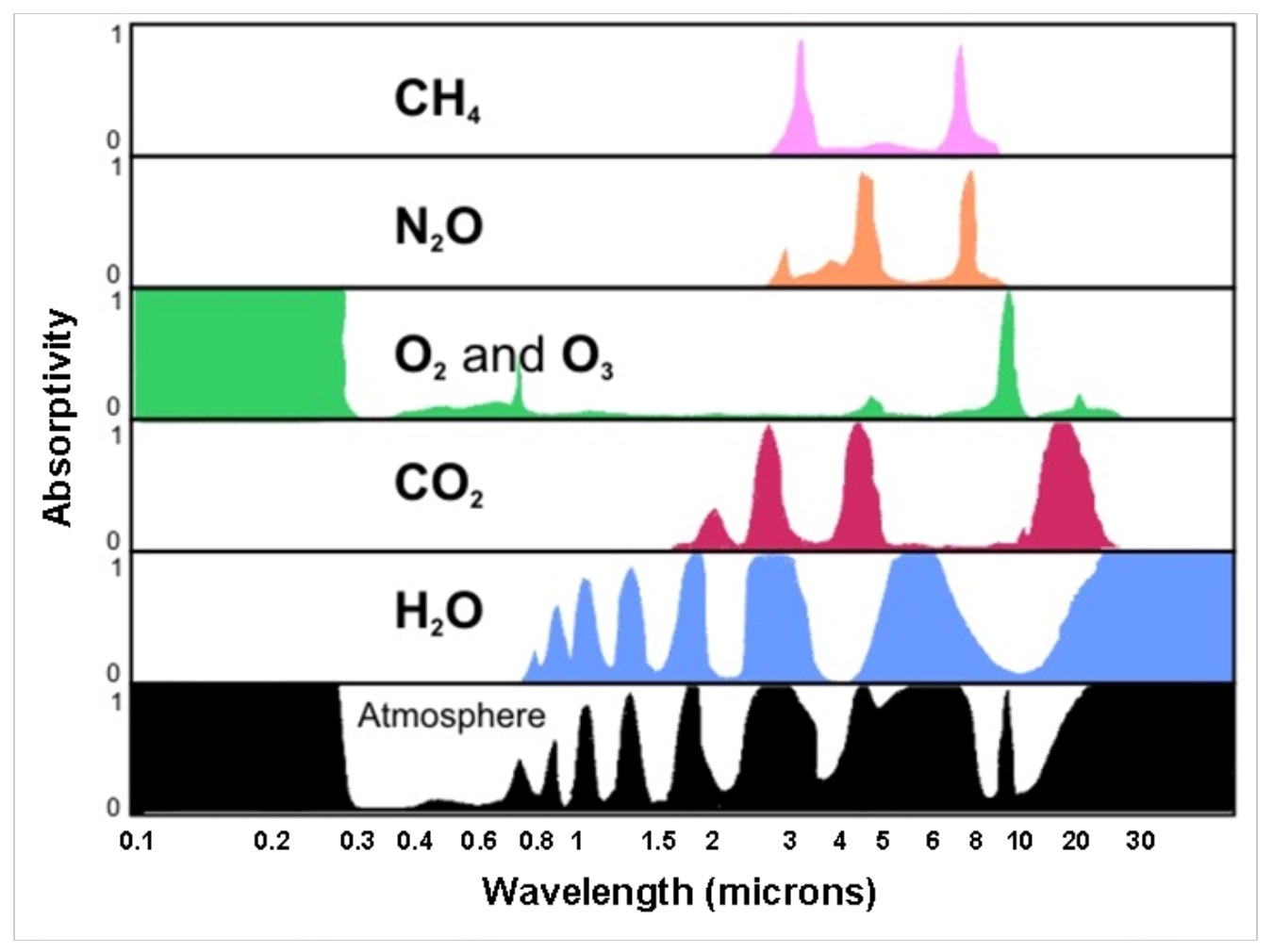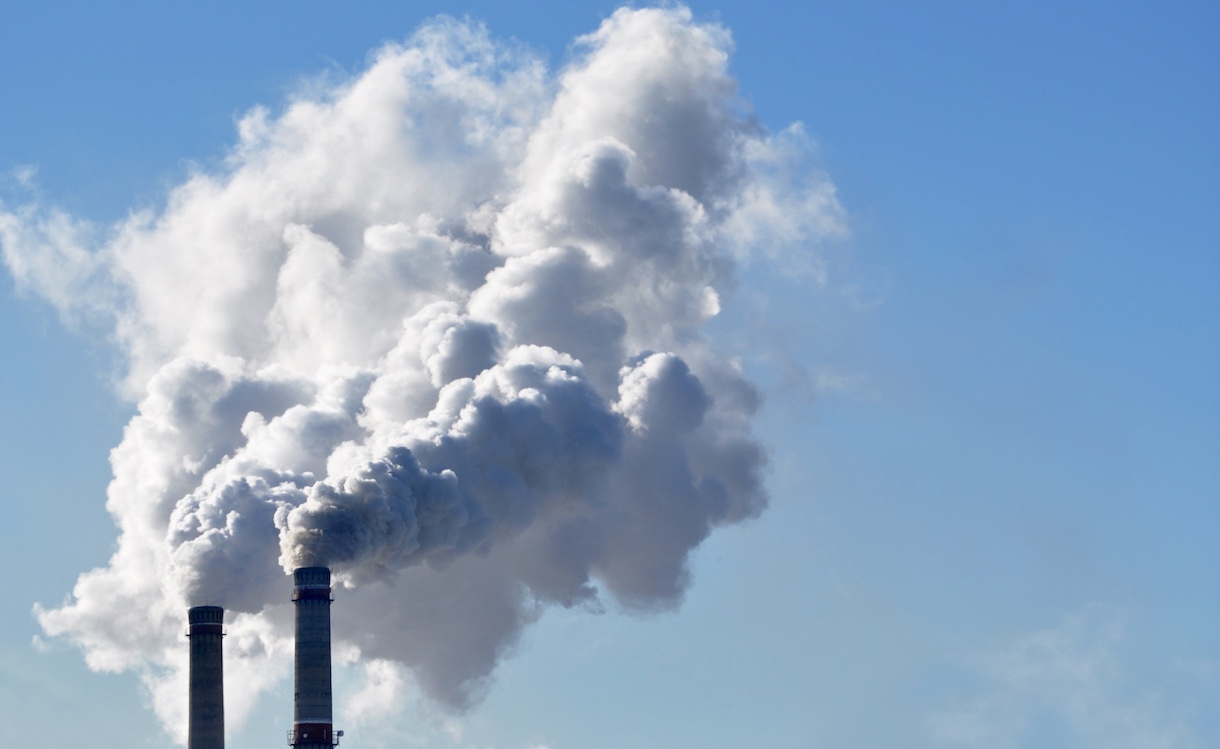This technique works by shining light through a gas sample, and if the gas in question is present, then it will hit its specific chemical signature (or colour) and absorb that colour. For example, the chemical signature of methane (CH₄), carbon dioxide (CO2) and water (H₂O) are all unique, as seen in the table on the right.
In the past, this technique relied on only one gas being measured at a time – where you would include the testing gas and a control gas as a point of reference. Then by looking at the contrast between the two colours, you could identify which gas was in the sample. However, this approach was relatively slow and inefficient.
To gather clues about the kind of gas in your sample, you would also need to tune your light source so it would ‘compute’ with the type of gas you were looking at. For example, to detect carbon dioxide, you would need to make sure you used a 4.3 µm mid-infrared laser, but for an explosive gas like methane, you would need to use a 3.5 µm laser instead.
However, the new method of combining two techniques – called absorption spectroscopy and the optical frequency microcomb – allows for many gases to be measured at the same time.
This is because the optical frequency comb includes all the potential colours and gases you could possibly test, and separates them out into equally spaced colours, like the teeth on a comb. It also has such a broad reference base that it can automatically correct for the type of light needed for a specific gas, simply by scanning the laser.





